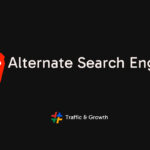Google Rich Snippets are a powerful tool for website owners to enhance their online presence and improve their search engine rankings. Rich snippets are a type of search result that provides additional information beyond the standard title, URL, and meta description. They can include images, reviews, ratings, and other types of structured data.
By using structured data markup on their website, site owners can help Google understand the content on their pages and display it in a more visually appealing and informative way. Rich snippets can help increase click-through rates and improve the user experience by providing more context and relevant information upfront. They can also help establish credibility and authority by highlighting positive reviews and ratings.
Overall, Google Rich Snippets are an important aspect of search engine optimization and can provide significant benefits to website owners who take the time to implement them correctly. By providing additional context and information to users, rich snippets can help improve engagement, increase conversions, and ultimately drive more traffic to a website.
What are Google Rich Snippets?
Google Rich Snippets are additional information displayed in search results that provide users with more context about a webpage’s content. They are also known as Rich Results and can include various types of data such as reviews, ratings, recipes, events, and more.
Rich Snippets are generated by structured data found in a page’s HTML. Structured data is a standardized format for providing information about a webpage and its content. It helps search engines better understand the content and context of a webpage, which can lead to more accurate and relevant search results.
There are several formats for structured data, including Microdata, JSON-LD, and RDFa. Google recommends using JSON-LD for structured data as it is easier to implement and maintain.
Schema.org is a collaborative community that creates and maintains the vocabulary for structured data. It is used by Google and other search engines to understand the content and context of a webpage. By including Schema.org markup in a webpage’s HTML, webmasters can provide more detailed information about the content of a webpage, which can lead to Rich Snippets in search results.
Rich Snippets can provide several benefits, including increased visibility in search results, improved click-through rates, and better user experience. They can also help businesses and websites stand out from their competitors in search results.
In summary, Google Rich Snippets are additional information displayed in search results that provide users with more context about a webpage’s content. They are generated by structured data found in a page’s HTML and can include various types of data such as reviews, ratings, recipes, and events. By including Schema.org markup in a webpage’s HTML, webmasters can provide more detailed information about the content of a webpage, which can lead to Rich Snippets in search results.
Why are Google Rich Snippets important?
Google Rich Snippets are an important feature for websites that want to improve their click-through rates and boost their visibility in the search engine results pages (SERPs). Rich Snippets are a type of structured data markup that site operators add to their pages’ HTML code. When displayed in Google Search Results, they add visual context for users and help Google understand the meaning and intent behind webpages.
Here are some of the reasons why Google Rich Snippets are important:
Improve Click-Through Rates
Rich Snippets help websites stand out in the search results by providing more information about the content of the page. This additional information can include ratings, reviews, prices, and other details that can help users decide whether to click through to the website or not. By providing more context and information, Rich Snippets can help increase click-through rates and drive more traffic to the website.
Boost Visibility in SERPs
Google Rich Snippets can also help websites improve their visibility in the SERPs. By providing more information about the content of the page, Rich Snippets can help Google understand the relevance and quality of the page. This can help the page rank higher in the search results for relevant queries, which can lead to more traffic and better visibility for the website.
Enhance User Experience
Rich Snippets can also enhance the user experience by providing more information about the content of the page before the user clicks through to the website. This can help users find the information they are looking for more quickly and easily, which can improve their overall experience with the search engine.
Ranking Factor
Google has confirmed that Rich Snippets are a ranking factor, which means that websites that use structured data markup to provide Rich Snippets may have an advantage in the search results. While Rich Snippets are not a guarantee of higher rankings, they can help improve the relevance and quality of the page, which can have a positive impact on rankings.
On-page SEO
Rich Snippets are also an important part of on-page SEO. By providing more information about the content of the page, Rich Snippets can help search engines understand the relevance and quality of the page, which can improve its visibility in the search results. By using structured data markup to provide Rich Snippets, websites can improve their on-page SEO and increase their chances of ranking higher in the search results.
Types of Google Rich Snippets
Google Rich Snippets are a type of structured data that provides additional information about a website’s content in the search engine results page (SERP). Rich snippets can include reviews, events, recipes, music, organization, books, news, prices, listings, and datasets. Here are some details about each of these types of rich snippets:
Reviews
Reviews are a popular type of rich snippet that showcase star ratings and reviews from customers. Review snippets can help businesses stand out in the SERP and increase click-through rates. To implement review snippets, businesses can use schema markup to provide information about the product or service being reviewed, the author of the review, and the rating.
Events
Event snippets provide information about upcoming events such as concerts, festivals, and conferences. They can include details such as the date, time, location, and ticket information. To implement event snippets, businesses can use schema markup to provide information about the event, the venue, and the ticketing website.
Recipes
Recipe snippets provide information about recipes such as ingredients, cooking time, and nutritional information. They can help users find the perfect recipe for their needs and increase click-through rates for recipe websites. To implement recipe snippets, websites can use schema markup to provide information about the recipe, including the ingredients, cooking time, and nutritional information.
Music
Music snippets provide information about music such as album artwork, song titles, and artist names. They can help users find the music they are looking for and increase click-through rates for music websites. To implement music snippets, websites can use schema markup to provide information about the music, including the album artwork, song titles, and artist names.
Organization
Organization snippets provide information about businesses such as their name, logo, and contact information. They can help users find businesses in their area and increase click-through rates for business websites. To implement organization snippets, businesses can use schema markup to provide information about their name, logo, and contact information.
Books
Book snippets provide information about books such as the title, author, and cover image. They can help users find books they are interested in and increase click-through rates for book websites. To implement book snippets, websites can use schema markup to provide information about the book, including the title, author, and cover image.
News
News snippets provide information about news articles such as the title, author, and publication date. They can help users find the latest news and increase click-through rates for news websites. To implement news snippets, websites can use schema markup to provide information about the news article, including the title, author, and publication date.
Prices
Price snippets provide information about product prices. They can help users find the best deals and increase click-through rates for e-commerce websites. To implement price snippets, e-commerce websites can use schema markup to provide information about the product, including the price and any discounts.
Listings
Listing snippets provide information about local businesses such as their name, address, and phone number. They can help users find local businesses and increase click-through rates for business websites. To implement listing snippets, businesses can use schema markup to provide information about their name, address, and phone number.
Datasets
Dataset snippets provide information about data sets such as the title, description, and creator. They can help users find data sets for their research and increase click-through rates for data set websites. To implement dataset snippets, data set websites can use schema markup to provide information about the data set, including the title, description, and creator.
In conclusion, rich snippets can provide valuable information to users and help websites stand out in the SERP. By using schema markup to provide information about their content, websites can increase click-through rates and improve their search engine rankings.
How to Implement Google Rich Snippets
When it comes to implementing Google Rich Snippets, there are several options available. Here are some of the most popular methods and tools:
HTML Tags
HTML tags are the basic building blocks of any webpage. To implement Rich Snippets, you’ll need to use specific tags to mark up the relevant content on your page. Some of the most commonly used tags include <h1> for headings, <p> for paragraphs, <img> for images, and <a> for links.
Structured Data Markup Helper
Google offers a Structured Data Markup Helper that can help you create the necessary HTML tags for your Rich Snippets. This tool allows you to select the type of content you want to markup (e.g. a recipe, a product, an event), and then guides you through the process of adding the appropriate tags to your page.
Structured Data Testing Tool
Once you’ve added the necessary HTML tags to your page, you can use Google’s Structured Data Testing Tool to check that everything is working correctly. This tool will show you any errors or warnings that need to be fixed before your Rich Snippets will be displayed in search results.
Schema.org
Schema.org is a collaborative project between Google, Microsoft, Yahoo, and Yandex that provides a standard vocabulary for structured data markup. By using Schema.org markup on your website, you can help search engines understand the content on your pages and display Rich Snippets in search results.
JSON-LD
JSON-LD is a lightweight data format that can be used to embed structured data directly into your HTML code. It’s a popular choice for implementing Rich Snippets, as it allows you to keep your markup separate from your content and makes it easy to update your schema as needed.
RDFa
RDFa is another option for embedding structured data in your HTML code. It allows you to add semantic annotations to your content using attributes like property and content. While it’s not as widely used as JSON-LD, it can still be an effective way to implement Rich Snippets.
WordPress
If you’re using WordPress, there are several plugins available that can help you implement Rich Snippets without needing to write any code. Some popular options include All in One Schema Rich Snippets, WP Review Pro, and WP Product Review.
JavaScript
JavaScript can also be used to implement Rich Snippets, although it’s generally not recommended as it can be more complex and harder to maintain than other methods. If you do choose to use JavaScript, be sure to test your implementation thoroughly to ensure that it’s working correctly.
Itemscope, Itemtype, and Itemprop
These are attributes that can be used to mark up specific elements on your page with structured data. Itemscope is used to define the scope of the structured data, Itemtype is used to specify the type of content being marked up, and Itemprop is used to define the specific properties of the content (e.g. name, description, price).
In conclusion, implementing Google Rich Snippets can be a powerful way to improve your website’s visibility in search results. By using the right HTML tags and structured data markup, you can help search engines understand the content on your pages and display Rich Snippets that are more informative and visually appealing to users.







